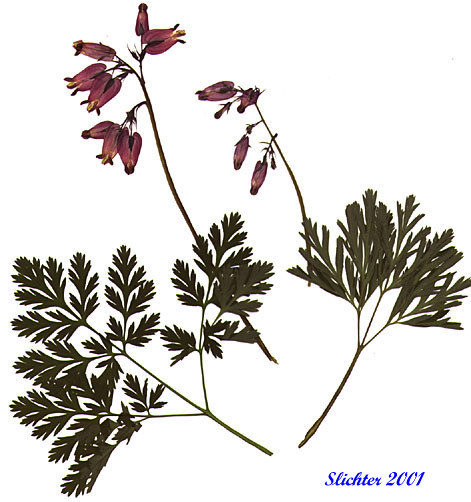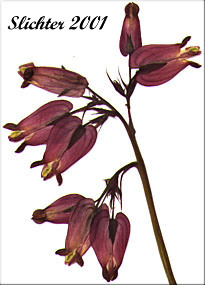
 Characteristics:
Characteristics:
Pacific bleeding heart is a beautiful, elegant wildflower well suited for native gardens. It is rhizomatous, and has leafless stems from 15-45 cm tall. The leaves are long-petioled, dissected, and rather fern-like. They are not quite as high as the flowers. The leaves are all basal and glaucous-colored (blue-green), with the blades 2-3 times ternate wiht numerous divisions. The blades range from 15-30 cm wide.
The 5-15 rose-colored flowers form an inflorescence known as a panicle. They hang down, and appear like a heart with a drop of blood on each side of the tip. The corolla is cordate at the base, with the 2 outer petals each with a short spur 2-4 mm long. The inner petals are 10-15 mm long. The fruit is a long, slender pod which tapers to a point.
Bleeding heart is a plant of moist, shady forests, although in the Cascades, it may also be adapted to open, rocky or talus areas.
Pacific bleeding heart is found from western British Columbia south to central California, and is found entirely from the Cascade crest west.
As mentioned above, bleeding hearts are useful for naturalized gardens. They do well in loose, loamy soils as a gound cover in shaded locations. They mix well with sour grass (Oxalis oregana), waterleaf (Hydrophyllum tenuipes) and fawn lilies (Erythronium species). Once established, they should bloom from early spring into early summer. Bleeding hearts should not be dug in the wild (except as salvage when the forest is being destroyed for development) as there are many nurseries which sell them and other native plants at reasonable prices.
